
Tucknott Electric, California-Based Electrical Contracting and Consulting Business
June 1, 2017
Forty-five years ago, most of Silicon Valley hadn’t been built yet, but it was about to be. So it was a good time for Robert Tucknott to open his electrical contracting business in nearby San Leandro, CA. It was also a good time to take up flying.
In 1972, Tucknott was 29 years old. He had spent four years apprenticing as an electrician, project manager and estimator before founding Tucknott Electric with just one employee. Two years later, he learned to fly, and soon started piloting his Beechcraft Baron to contract jobs in Stockton, Fresno and other cities throughout California.
By the early 1980s, the company was in a larger office and Tucknott was in a smaller plane. He’d hired more than 100 electricians and switched to an upgraded Cessna 182 Skylane for its fuel efficiency and performance.
“When Silicon Valley was building up, we did a lot of offices and shopping centers there,” said Tucknott. “Then, at least twice a month I’d travel for work, and my Cessna 182 is a great little airplane for what I do.”
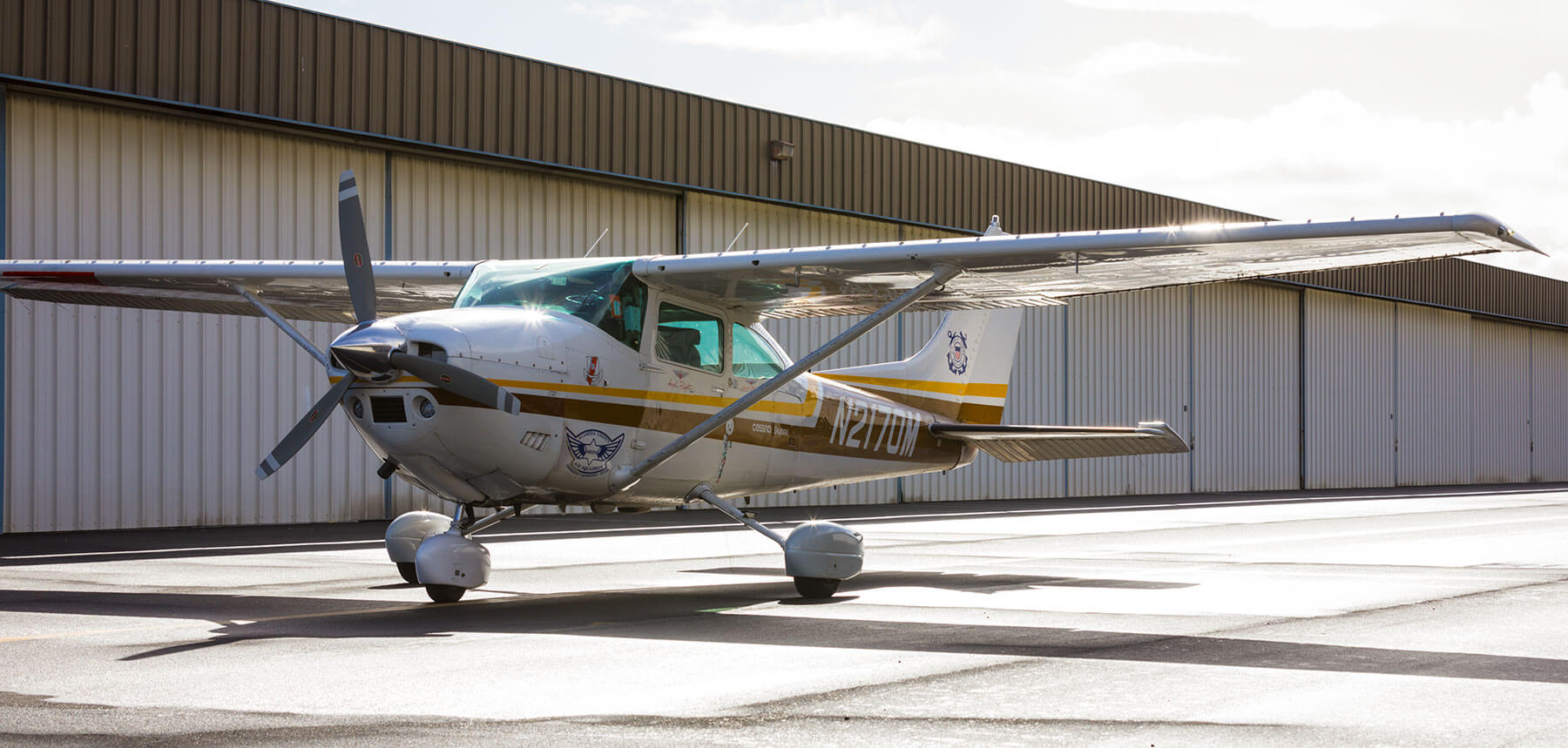
With a Continental 550D engine driving a three-blade propeller, and fuel injection replacing the carburetor, Tucknott’s airplane gets 60 more horsepower than the standard factory-model Skylane. “I love that engine. I get tremendous climb-out, it gets me there quicker and I’m not using much more fuel,” said Tucknott.
A New Direction
After four decades in business, Tucknott has a team of project managers and estimators he can rely on for most local jobs. That – and his Skylane – enabled him to pursue a new line of business: as a forensic expert witness for electrical insurance claims and legal cases.
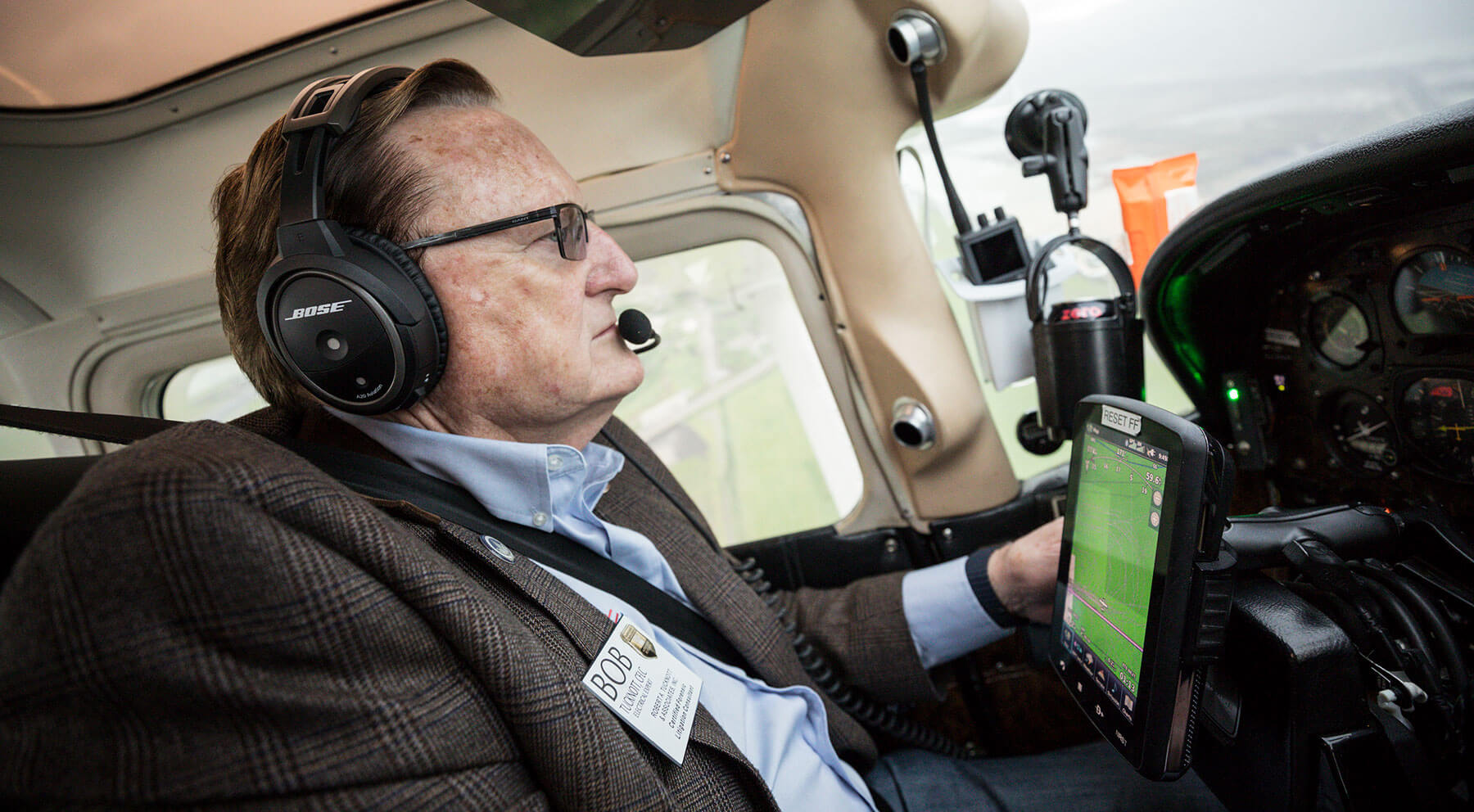
Often, an insurance company or law firm will hire Tucknott to travel to and investigate an electrical accident, such as a fire, asbestos exposure or a construction worker who’s suffered an electrical shock. After conducting a site inspection, Tucknott will give a deposition about what he thinks happened.
“I like this forensic work. It uses the 40-plus years of experience I’ve got in the electrical industry to help others solve problems,” said Tucknott. “Most of my cases aren’t in my backyard, but I can fly easily to most of the Western states: Oregon, Nevada, Arizona and California.”
At least twice a month I travel for work, and my Cessna 182 is a great little airplane for what I do.
Because he almost always flies into small, general aviation airports, Tucknott can beat a business traveler on a commercial flight from the Bay Area to Los Angeles, even at 150 knots. In fact, travel is so important to both Tucknott Electric and Robert A. Tucknott & Associates (the forensic electrical consulting business), that in 2016 he relocated his offices to property on Livermore Municipal Airport (LVK), five minutes from his hangar.
It’s not unusual for attorneys to travel with Tucknott onboard the Skylane to investigate an accident. Federal Aviation Regulations allow pilots to share fuel expenses if all passengers are traveling for a common purpose and the air travel is not held out to the public.
“When I’ve been retained by local attorneys and they need to get to a case, we all benefit,” said Tucknott. “We can save a lot of money if I take two or three attorneys in my airplane and go out to a case that’s a couple of hours away by air.”
A Wealth of Information
For passengers in the back, Tucknott has an extra iPad so they can track the flight’s progress. It’s one of seven GPS-enabled devices on his airplane.
The panel mount is a Garmin stack, with two units for him to program in the flight plan. Above the panel, he’s mounted a portable Garmin GPS unit that tracks radio frequencies. He has a tablet display on the left yoke that he uses for approach plates, and one on the right yoke for inflight weather. There’s another iPad installed with ForeFlight so he can check enroute charts and
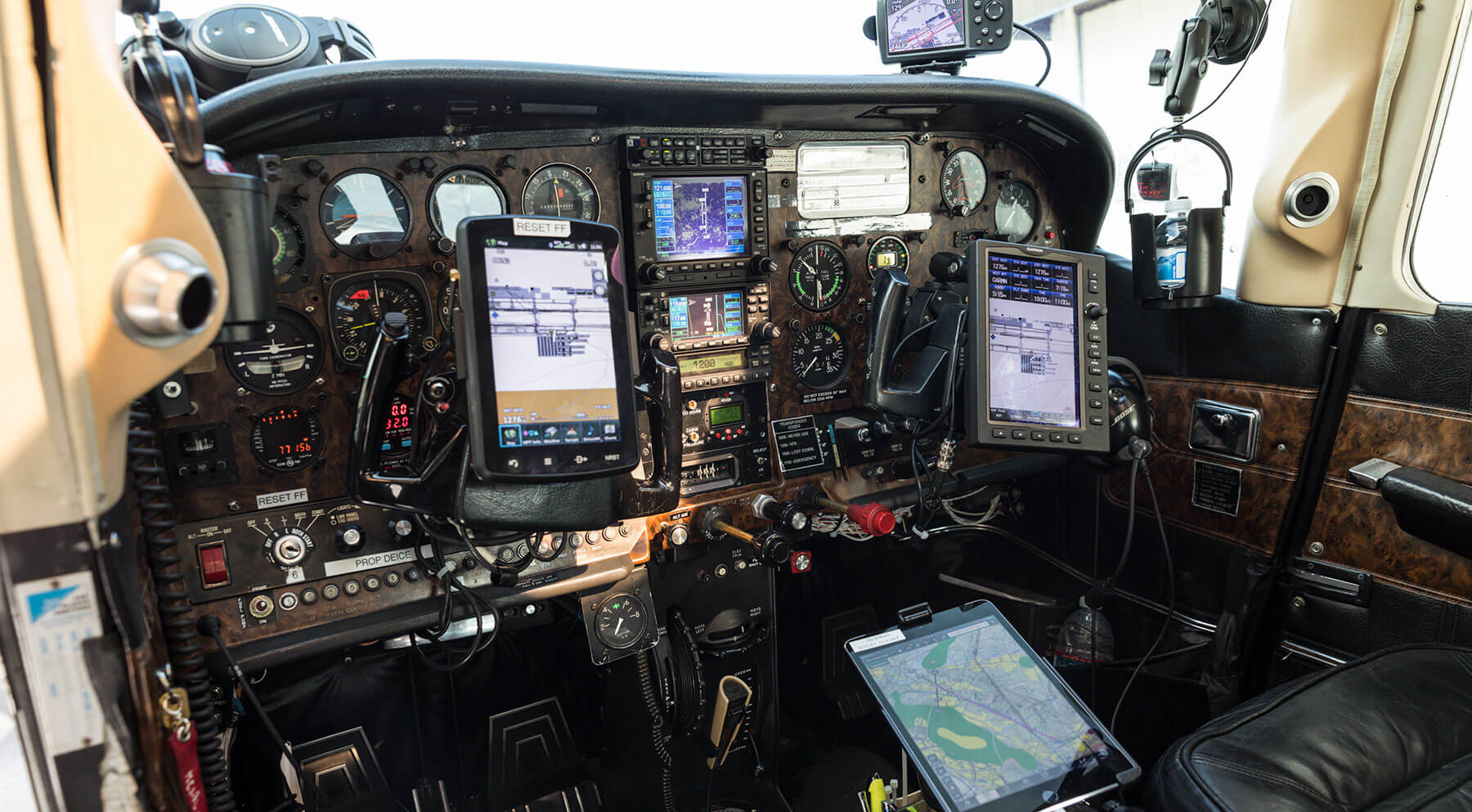
Using six displays lets Tucknott compare different approach procedures and navigate around weather without pushing too many buttons.
“For instrument flying, it’s wonderful having lots of screens. I can put different approach plates on different instruments and have them all tilted toward me,” said Tucknott. “It’s great having that much information. I also regularly use the angle-of-attack indicator and the other instrument gauges to track fuel flow, time aloft and cylinder temperature.”
A Lifelong Passion
Outfitted the way it is, Tucknott loves flying the Skylane. He has more than 3,000 hours in the airplane, and when he’s not flying for business, he flies as much as he can for his charity and volunteer work.
In 1997, Tucknott co-founded the Northern California wing of Angel Flight West, and for several years flew the most missions of any volunteer pilot in the organization. Picking up patients and flying them to medical treatment – with the costs coming entirely out of his own pocket – has taken Tucknott to dirt airstrips in the remote Nevada desert and fields along California’s isolated northern coast.
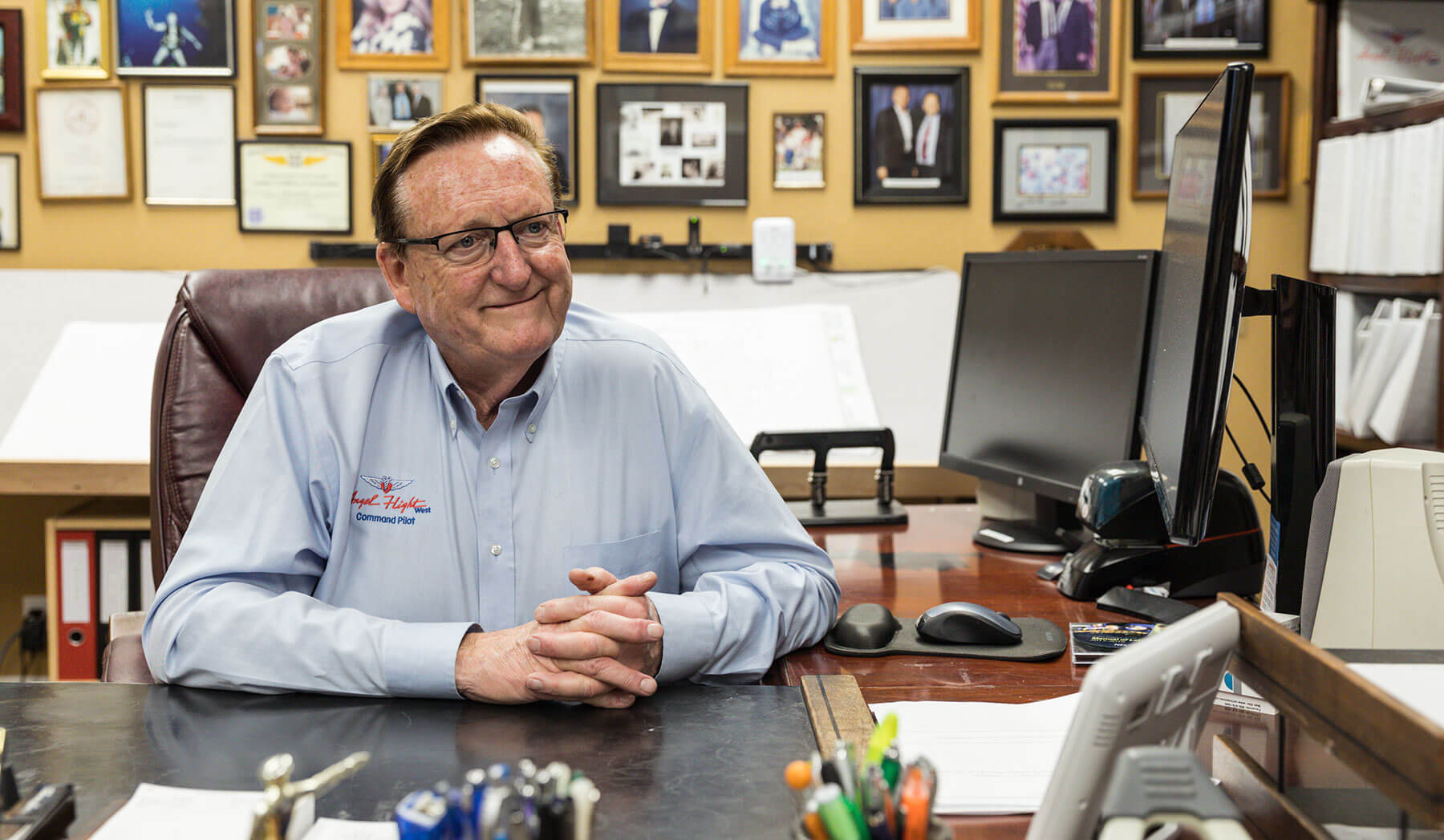
Charitable flying is one of the most rewarding parts of Tucknott’s life. He conducts Young Eagles introductory flights for six different chapters of the Experimental Aircraft Association across the Bay Area.
“I guess I have a charitable bent,” said Tucknott. “I’ve been doing charitable flying ever since I got into business.” He’s also a member of the International Fellowship of Flying Rotarians and donates San Francisco Bay tour flights in his plane to auctions that raise funds for families of fallen policemen and firemen.
Combining public service and flying is important to Tucknott. He flies aerial patrols for the Coast Guard Auxiliary, and he’s a former commander of the Alameda County Sheriff’s Air Squadron. With about 35 volunteer pilot members, the squadron flies deputies responding to fires and crime scenes.
Tucknott is still an active member of the air squadron, and he hosts training events at his hangar and his offices. Together with the sheriff’s department, the volunteer pilots train for search and rescue missions and practice precision flying, spot landings and message drops. The sheriff’s department operates two Cessna 206 Stationairs, but Tucknott flies deputies in his own Skylane.
Learn more about Tucknott Electric.
Tucknott the Heart of the Livermore Airport Community
Because Robert Tucknott is so passionate about flying and the community of volunteer pilots who comprise the Alameda County Sheriff’s Air Squadron, he often hosts training sessions and meetings at his hangar on California’s Livermore Municipal Airport (LVK). In addition, once a year, he hosts a barbecue for all the pilots on the airfield.
Recently, Tucknott was able to combine his electrical contracting business and his love of flying in a new venture.
“I built the new FBO here in Livermore,” said Tucknott, who is a general contractor, as well as an electrical contractor. “I designed and built the electrical [system] for the new Five Rivers Aviation building, and the developer has asked me to build their next set of hangars.”
Going above and beyond in support of aviation, Tucknott has written articles for local newspapers about general aviation’s critical role in emergency and medical response.
“I’ve tried to help put the facts in front of the public,” he said, “so we can keep these airports open.”
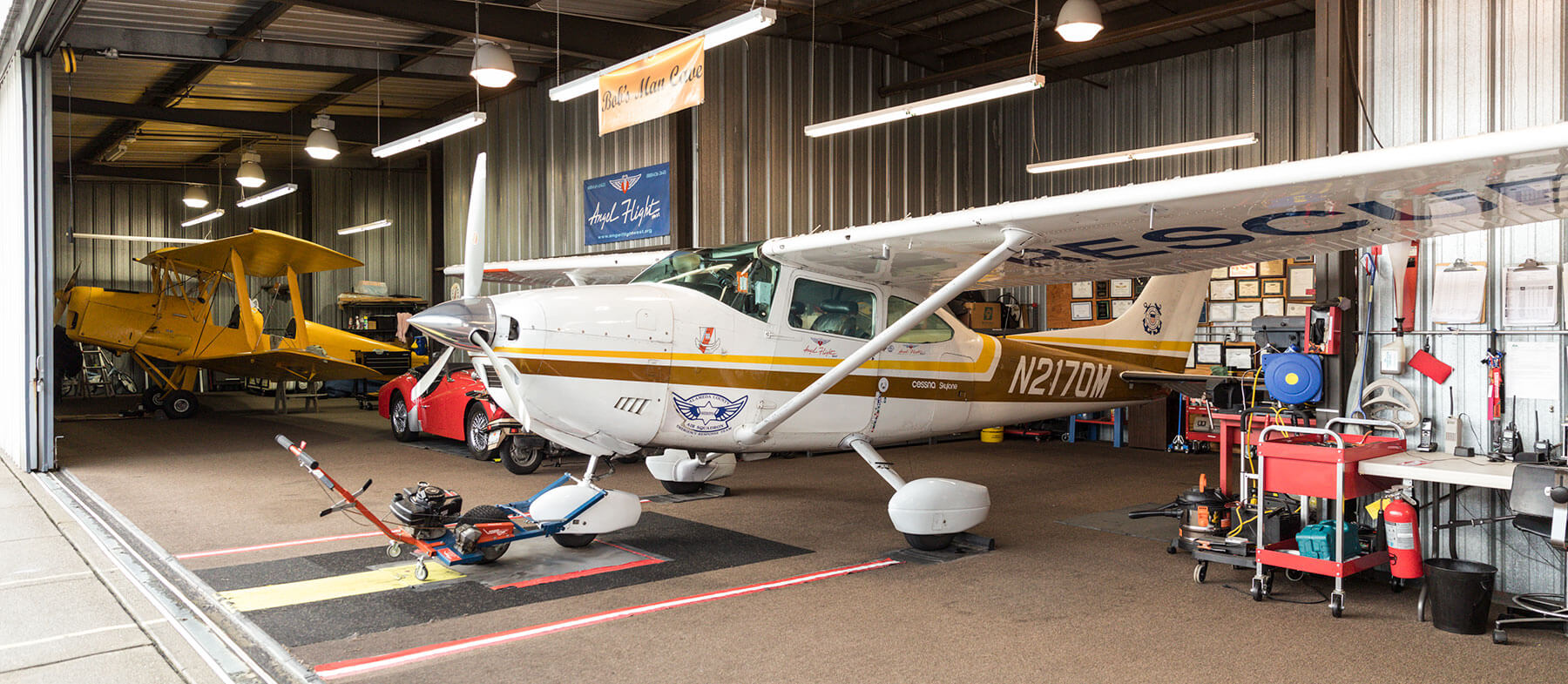
Snapshot: Tucknott Electric
Base:
California’s Livermore Municipal Airport (LVK)
Aircraft:
One Cessna 182
Personnel:
Tucknott is the owner/operator and sole pilot.


 International Business Aviation Council Ltd.
International Business Aviation Council Ltd.